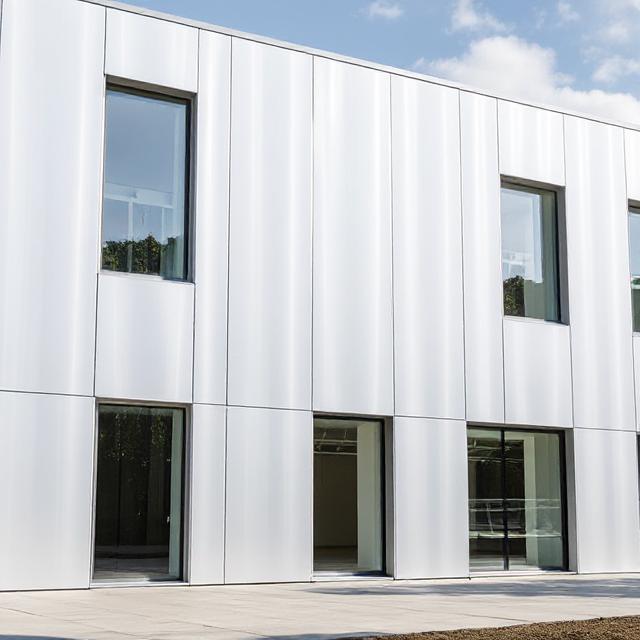


Aluminium cladding panels have become a popular choice in modern architecture for their durability and aesthetic appeal.
Maintenance Tips for Long-Lasting Aluminium Cladding Panels
Aluminium cladding panels have become a popular choice in modern architecture for their durability, aesthetic appeal, and resistance to harsh weather conditions. Whether used in residential, commercial, or industrial buildings, these panels offer a sleek finish and long-term performance. However, like any exterior material, they require proper care and maintenance to preserve their appearance and structural integrity. In this article, we’ll explore essential maintenance tips to ensure the longevity of your aluminium cladding panels and aluminium cladding sheets.
Regular cleaning is the cornerstone of maintaining aluminium cladding panels. Dust, dirt, pollutants, and grime can accumulate over time, affecting the panels’ shine and possibly leading to corrosion if not cleaned properly.
Use a mild detergent mixed with warm water and a soft cloth or sponge to gently wipe the panels. Avoid abrasive materials or harsh chemicals, as they can scratch or damage the surface. Cleaning your aluminium cladding sheets at least twice a year—more often in urban or coastal areas—is recommended to keep them looking pristine and prevent buildup of corrosive substances.
When panels are installed in high-rise buildings, consider professional facade cleaning services for safe and efficient cleaning.
Periodic inspection is crucial to identify signs of wear and tear early. Aluminium cladding panels are typically robust, but they can still suffer from dents, scratches, or dislodged fasteners due to environmental factors or impact.
Check for:
Cracks or deformations in the aluminium cladding sheet
Loosened screws or anchors
Water leakage or staining beneath the panels
Discoloration or fading
Addressing these issues early can prevent further damage and help maintain the structural stability of the cladding system.
Most aluminium cladding panels come with a protective coating, such as PVDF (Polyvinylidene fluoride), which offers resistance against UV rays, moisture, and pollutants. However, over time, this coating can wear off due to constant exposure.
To prolong the lifespan of this finish:
Avoid pressure washing with high PSI settings.
Don’t use metal brushes or harsh solvents.
Rinse the surface with clean water after cleaning to remove any residual soap.
Use only recommended cleaning agents designed for coated metal surfaces.
By maintaining the integrity of the coating, you ensure the aluminium cladding sheet continues to offer optimal protection and appearance.
While aluminium is naturally corrosion-resistant due to its oxide layer, it is not completely immune—especially in marine or industrial environments where salt and chemicals are present.
To combat corrosion:
Clean aluminium cladding panels more frequently in such areas.
Apply anti-corrosive treatments if recommended by the manufacturer.
Ensure proper sealing and drainage systems are in place to prevent water stagnation behind the cladding.
Corrosion prevention not only preserves the panel’s look but also its strength and performance over time.
If your aluminium cladding sheet begins to show signs of aging—like discoloration or chalking—it might benefit from repainting or refinishing. This is especially common in buildings that have used the same cladding for decades.
Before repainting:
Clean the panels thoroughly to remove any surface contaminants.
Lightly sand the surface for better adhesion.
Use a high-quality, weather-resistant paint specifically made for metal cladding.
Consult professionals for large-scale repainting projects to ensure proper adhesion and long-term results.
Sometimes, the condition of aluminium cladding panels is affected not by the panels themselves, but by the surrounding structures. Leaky gutters, broken windows, or cracked concrete can all contribute to staining or water damage.
Make sure to:
Clean gutters regularly to prevent overflow onto the cladding.
Seal gaps or cracks in adjacent walls or roofing.
Ensure proper slope and drainage to avoid water pooling.
By maintaining the areas around the cladding, you indirectly protect the panels from environmental stress.
Keeping a maintenance log can be very useful for long-term care. Document each cleaning, inspection, and repair performed on your aluminium cladding sheets. This helps track the condition of the panels and identify recurring issues.
Create a schedule:
Semi-annual cleaning
Annual inspections
Immediate repairs for identified issues
A well-maintained log also adds value when selling or leasing the property, demonstrating the effort put into preserving the facade.
